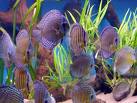School of Marine Sciences
Dyuthi/Manakin Repository
- Dyuthi Home →
- e-SCHOLARSHIP →
- School of Marine Sciences
School of Marine Sciences
Browse by
Recent Submissions
-
(Elsevier, January 26, 2004)
-
(Elsevier, November 27, 2001)
-
(Microbes And Enviornments, June 19, 2000)
-
(Elsevier, January 11, 2005)
